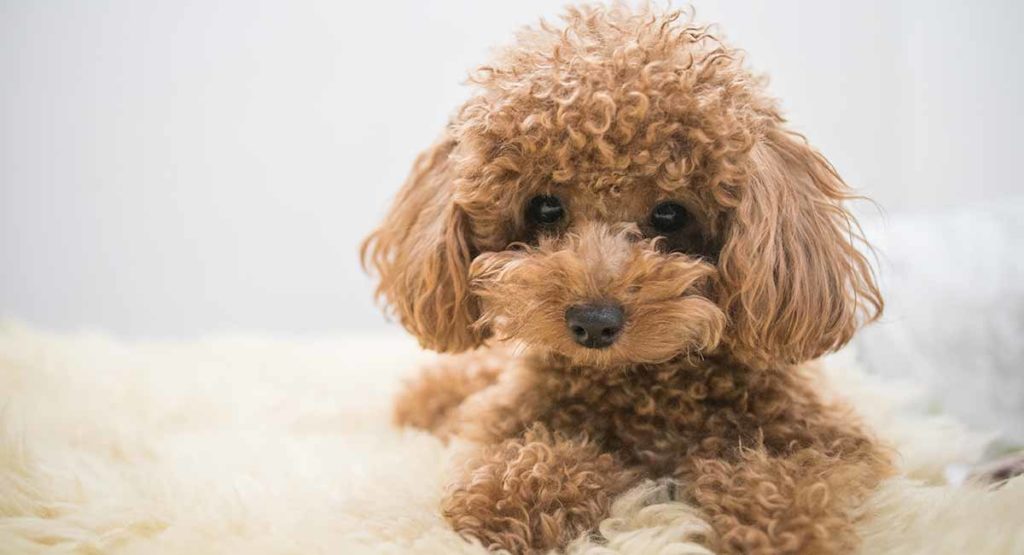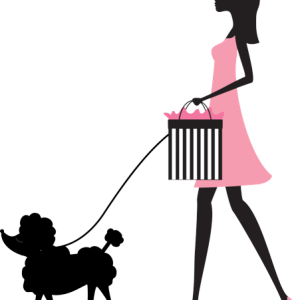About Toy Poodle

Living Needs
Here is where the toy poodle’s aptitude as an ideal family pet really shines. While poodles can be active dogs and will require some kind of daily exercise, toy poodles can get all their needs taken care of right there on the living room floor. Nichols says these little dogs will be happy with whatever type and amount of exercise their owner provides.
“They are extremely athletic, but not particularly hardy or fast,” she says.
Their tiny size makes them marvelous apartment-dwellers, and their innate desire to be lapdogs makes them great for seniors and people with mobility issues. Poodles of all sizes make great therapy dogs, and toy poodles in particular will love sitting near you for hours at a time.
Toy poodles do great in households with other dogs, and the breed’s lower prey drive, high intelligence, and friendly attitude make them ideal for houses with cats as well. Poodles love children and are eager to play, but most vets and breeders will steer households with children under the age of 10 toward the miniature or standard varieties, simply because the toy poodles are so small. They can be easily hurt by a falling child or by being handled too roughly. Always supervise children when they play with any dog and teach them how to properly interact with pets.
Care
No breed is perfect, and for poodles the biggest setback is going to be their grooming needs. That coat that is so shed-free and allergy-friendly? It’s going to need brushing. A lot of brushing—ideally, every day. Because his hair curls in on itself, it’s extremely prone to matting and, if left unchecked, can cause skin infections and have to be shaved off entirely.
Aside from the brushing, poodles will need a bath and haircut every four to six weeks. While show dogs have a variety of complicated cuts to choose from, most non-show owners opt for a more standard sporting cut because of its ease to maintain. Like all dogs, you’ll need to trim his nails regularly. Special attention should be paid to the ears, as their hair will grow up inside the ear canal, trapping wax and dirt and leading to infections.
History
The poodle is the national dog of France, which is why you’ll hear many people refer to the standard poodle as the “French poodle.” Despite this close association, poodles actually got their start in Germany, where they were developed and bred as duck hunters. Today in France, the poodle is known as the caniche, which translates to “duck dog.” The word “poodle” derives from the German pudelin, which refers to splashing in water.
Solely a possession for the rich and famous throughout the 15th and 16th centuries, poodles have been featured in paintings by Rembrandt and German artist Albrecht Dürer, among others. Toy poodles began to see favor by the late 18th century, appearing in artwork and in the courts of French aristocracy.
The American Kennel Club recognized the poodle as a registered breed in 1887.
Health
Though the three varieties of poodles are the same breed, they do not suffer from the same conditions. While the standard poodle will be more prone to bloat, toy poodles can be slightly more susceptible to blood clotting disorders including Von Willebrand’s disease and hemophilia, Beck says.
Toy poodles will also suffer from common “small dog” maladies such as luxating patellas and Legg-Calvé-Perthes disease, which causes reduced blood supply to the head of the thigh bone.
Finally, smaller dogs can have a higher propensity for dental problems. In addition to being at greater risk for tooth decay, they don’t lose their puppy teeth as easily as bigger dogs, Beck says. “So what will happen is their adult teeth will grow in and those puppy teeth will still hang on, and eventually need to be pulled.”
While you need to watch out for those health problems, toy poodles will live a long time, 10–18 years. Reputable toy poodle breeders will conduct all health tests recommended by the Canine Health Information Center.

Temperament
Poodles are incredibly smart. They tend to consider themselves a vital part of the family, have strong personalities, and learn things in a flash. They will get legitimately disgruntled if they think they’re being left out of family activities.
Of course, this temperament is kind of a double-edged sword. Toy poodles are devoted family pets who love to be the center of attention, learn tricks, and take walks. They’re excellent in agility and obedience training and will play with children for hours. Because of their extreme intelligence, poodles are even quick to learn how to engage in more complex games such as hide and seek. On the flip side, poodles can develop common stress behaviors associated with separation anxiety. If you leave them alone for too long or don’t give them the attention they deserve, these pups can be passive aggressive and do things they know you don’t like—while you’re there to watch.
“Toys are funny and loving,” says Pam Nichols, DVM, president of the American Animal Hospital Association. “[They are] very gentle and very quiet, if that is what you require. … They have a funny personality and they are very affectionate.”
People who own a toy poodle should not baby him. The toy poodle’s teensy-tiny size makes it tempting to carry him everywhere, and he’s so cute that it’s no surprise owners are tempted to spoil him rotten. But, again, poodles are brilliant. A toy poodle who is carried everywhere will start to expect to be carried everywhere. As a result, every poodle owner should take full advantage of the breed’s brilliance and eagerness to please, and obedience train their pet as quickly as possible.
Appearance
Toy, miniature, and standard poodles are all the same breed of dog, so they’ll look more or less the same—except for their size. Toy poodles are the smallest of the three, standing no more than 10 inches tall and generally weighing right around 5 pounds.
All three classifications of poodle have squarish bodies, generally about as long as they are tall. Poodles have a proud bearing, with heads kept high and their large, dark-colored eyes looking alert. Poodle coats come in a stunning array of colors from black, through the browns and yellow colors all the way to white. Bi-colored coats are also seen, though not hugely common.
Easily the most recognizable part of poodles’ appearance is their curly fur coat. Poodles don’t shed much, making them great for owners with allergies. While there aren’t technically any hypoallergenic dogs, most people will find toy poodles close enough to not really quibble over it. Additionally, groomers can style a poodle’s fur many different ways, and the breed has become famous for its outlandish show cuts.

